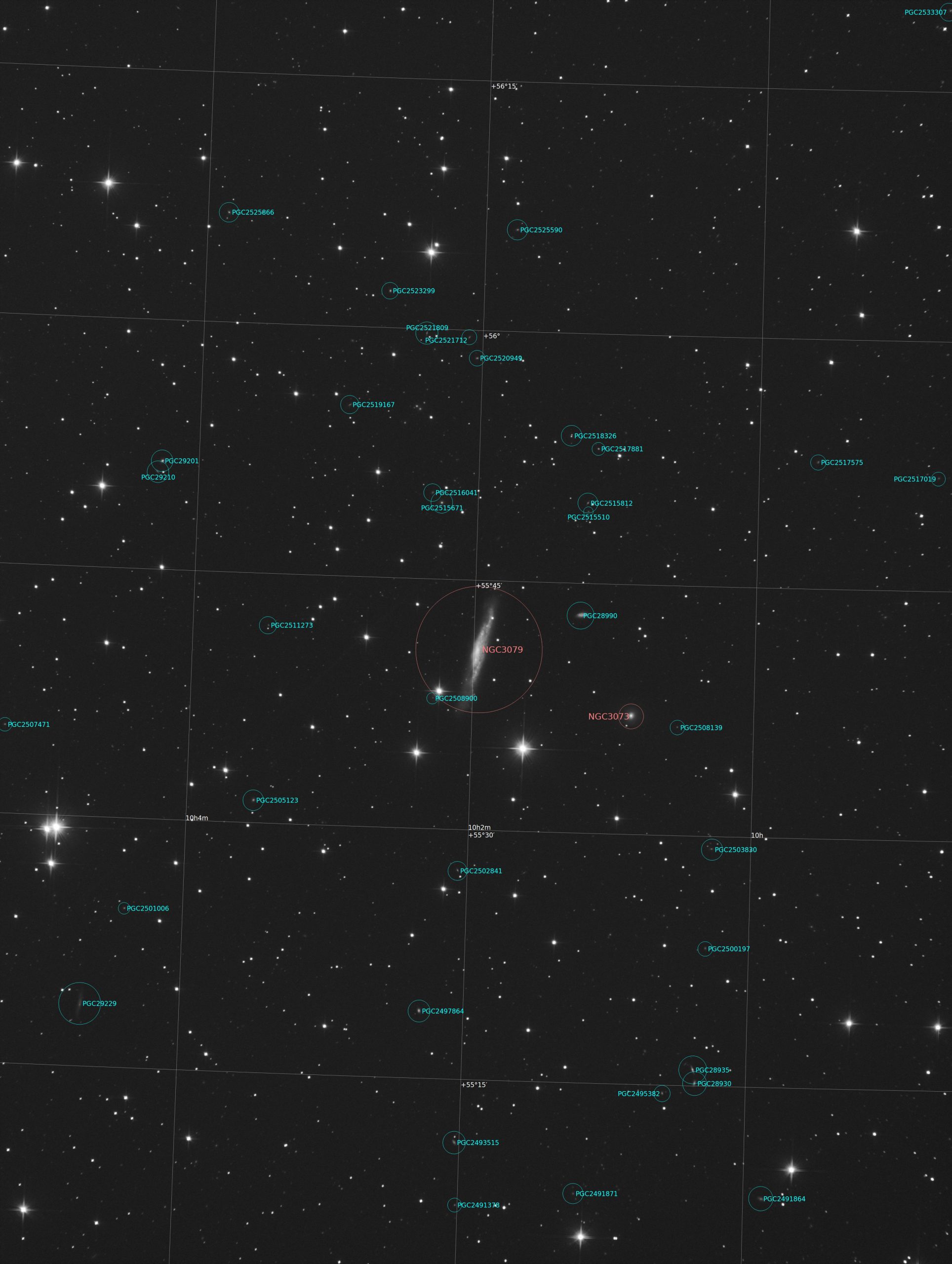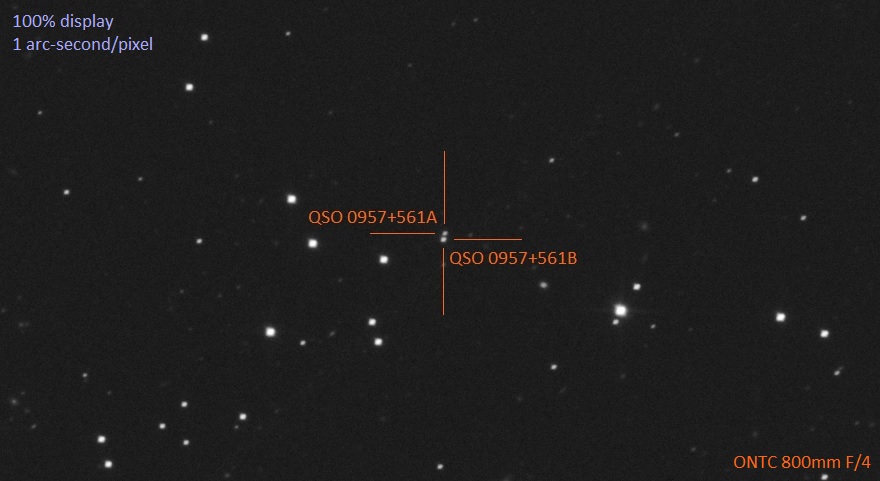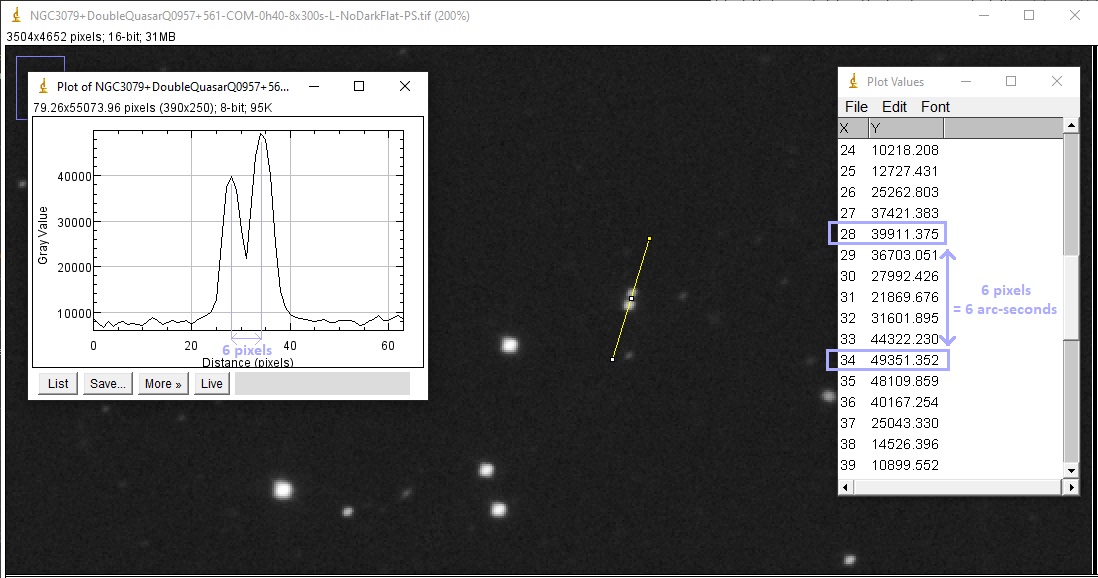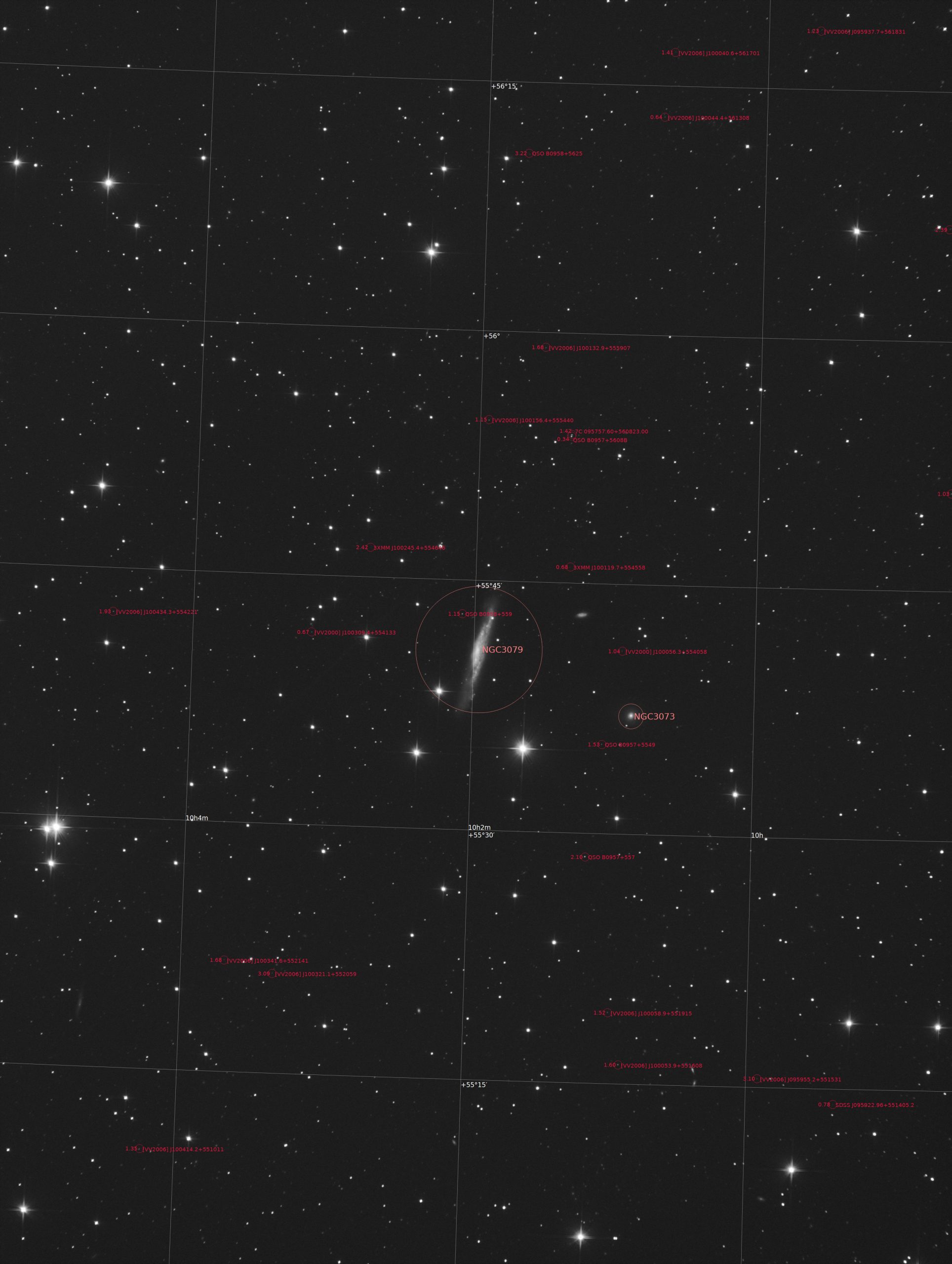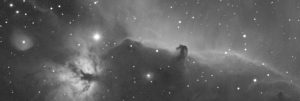40mnn exposure (L:8x300s)
Acquired on the 17th of March 2020 with 8″ ONTC
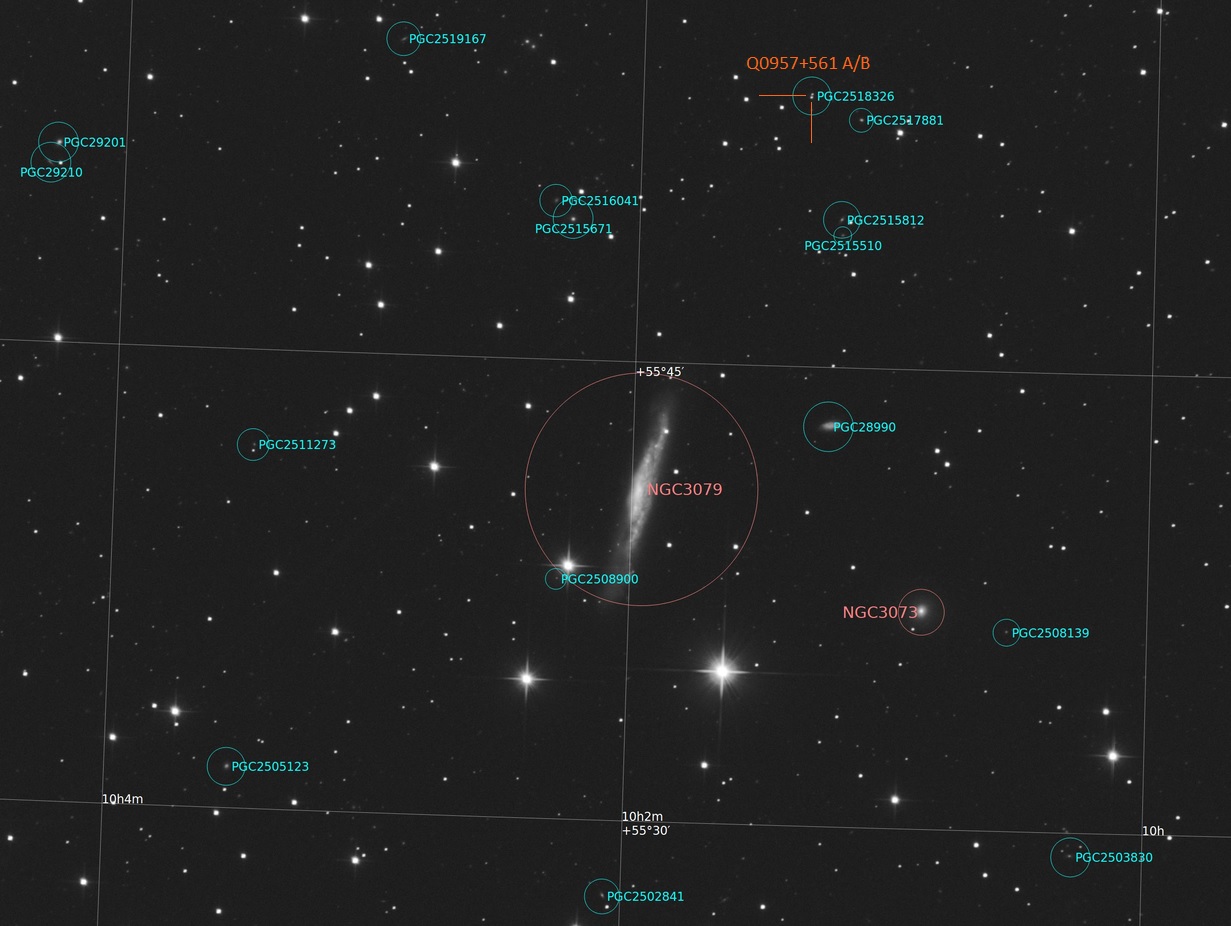
Setup: TS ONTC 200/800, 2″ Feathertouch, AZ-EQ6, QHY163m gain=100, OAG-M, QHYCFW2-M, AstroLink 4 mini. Software: APT, Stellarium, PHD2
A twin quasar!?? gravitationally lensed ?!! Well… it seems to be a good excuse for imaging the field…
Location
This double quasar is located in Ursa Major constellation, west of Merak, and at a few arc-minutes north of NGC3079.
A more detailed location is available hereunder with the annotated image.
Galaxies
On the center of the image lies NGC3079, a barred spiral galaxy of apparent magnitude 11.5 located at 50 million light years from us. This is an active galaxy from the Seyfert kind with a supermassive black on its core.
Just nearby, NGC3073 is a lenticular galaxy located at 53 million light years from earth. NGC 3073 is part of the NGC3079 group which includes also several small galaxies:
- UGC5421, identified as PGC29229 (bottom left corner below)
- UGC 5459, UGC5460 and UGC5479 which are south and south east of this field of view
All other galactic objects are referenced as PGC. Let’s now take a look at quasars.
Twin Quasar
This famous Twin Quasar is located north of NGC3079. It is identified above as PGC2518326, but is also named QSO 0957+561A and QSO 0957+561B.
In 1979, a spectrum measurement of these 2 objects reveals that they should be in fact the same quasar, located at 8.7 billion light years (z=1.41). The mass of a galaxy cluster located in front of the quasar bends its light and splits it into 2 paths, generating these 2 dots on the image. Dots that are 6arc-second separated as confirmed below.
One of the two light paths is even slightly longer: the light of QSO 0957+561B is received 417 days after the light of QSO 0957+561A.
At this time, it was the first supposed observation of gravitational lensing effect! Phenomenon that will be confirmed later.
Others quasars
Others quasars of this field are annoted below using Aladin software for the data extraction and Pixinsight for the annotation. Most of the quasars have been detected, roughly up to mag 21 in g (AB) SDSS band.
Surprisingly, the B component of the Twin Quasar also labelled QSO B0957+5608B is coted in Aladin software at a redshift of 0.34. This redshift corresponds roughly to the redshift of YGKOW G1, the lensing galaxy, though it is located 1arc-second north. Strange…
| NAME | Detected | V (Visual) | g (AB) SDSS green | r (AB) SDSS red | Redshift z |
|---|---|---|---|---|---|
| QSO B0957+5608B | YES | 16.95 | 16.851 | 16.7 | 0.33515 |
| 7C 095757.60+560823.00 | YES | 16.95 | 17.115 | 16.931 | 1.416375 |
| QSO B0957+557 | YES | 17.5 | 17.619 | 17.557 | 2.097507 |
| [VV2006] J100414.2+551011 | YES | 18.28 | 18.393 | 17.826 | 1.352458 |
| QSO B0958+559 | YES | 18.38 | 18.469 | 18.06 | 1.15073 |
| [VV2006] J100053.9+551608 | YES | 18.72 | 18.559 | 18.62 | 1.59902 |
| [VV2006] J100156.4+555440 | YES | 18.74 | 18.785 | 18.396 | 1.15227 |
| [VV2006] J100434.3+554221 | YES | 19.03 | 18.892 | 18.884 | 1.93066 |
| [VV2000] J100309.4+554133 | YES | 19.1 | 18.929 | 18.953 | 0.67404 |
| QSO B0957+5549 | YES | 19.04 | 18.989 | 18.759 | 1.53114 |
| [VV2006] J100058.9+551915 | YES | 19.19 | 19.062 | 19.02 | 1.52161 |
| [VV2006] J100132.9+555907 | YES | 19.22 | 19.155 | 18.973 | 1.68468 |
| [VV2006] J100044.4+561308 | YES | 19.18 | 19.166 | 18.882 | 0.6387 |
| [VV2006] J100341.6+552141 | YES | 19.51 | 19.401 | 19.277 | 1.67712 |
| [VV2006] J095955.2+551531 | YES | 19.6 | 19.594 | 19.359 | 3.099589 |
| [VV2006] J100321.1+552059 | YES | 19.69 | 19.722 | 19.405 | 3.090613 |
| [VV2006] J100040.6+561701 | YES | 19.97 | 19.861 | 19.644 | 1.41105 |
| QSO B0958+5625 | NO | 20.08 | 20.08 | 3.216 | |
| [VV2006] J095937.7+561831 | YES | 20.01 | 20.156 | 19.462 | 1.23175 |
| [VV2000] J100056.3+554058 | YES | 19.99 | 20.226 | 19.839 | 1.038112 |
| 3XMM J100119.7+554558 | NO | 20.86 | 20.955 | 20.853 | 0.677669 |
| SDSS J095922.96+551405.2 | YES | 21.136 | 20.861 | 0.784117 | |
| 3XMM J100245.4+554646 | NO | 21.33 | 21.149 | 2.42418 |
Conclusion
Beside this very interesting Twin Quasar, there is also 3 galaxies belonging to NGC3079 group in the field and plenty of others quasars. The excuse was definitely good 🙂



